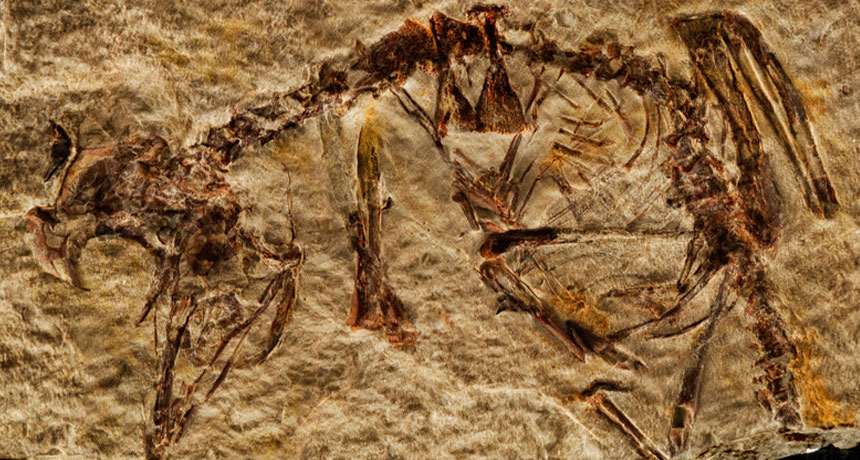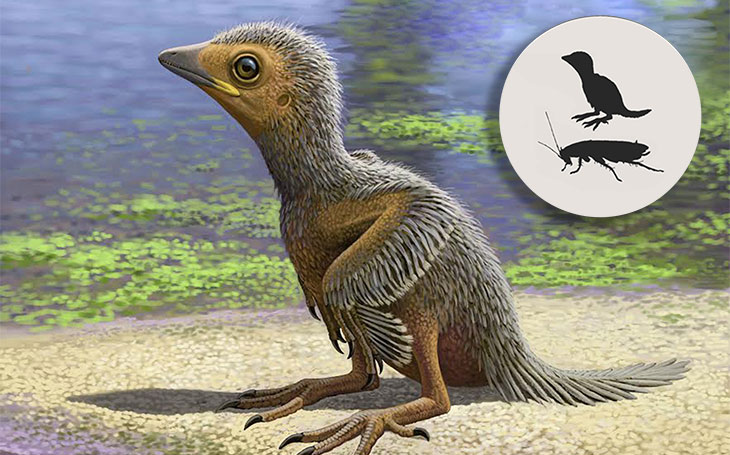This baby bird fossil gives a rare look at ancient avian development
The lack of complete breastbone suggests diversity in how some early birds developed

TINY FOSSIL The breastbone of this fossilized ancient baby bird was still mostly cartilage, rather than bone, when the bird died, meaning it wouldn’t yet have been able to fly, an analysis suggests.
F. Knoll et al/Nature Communications 2018







